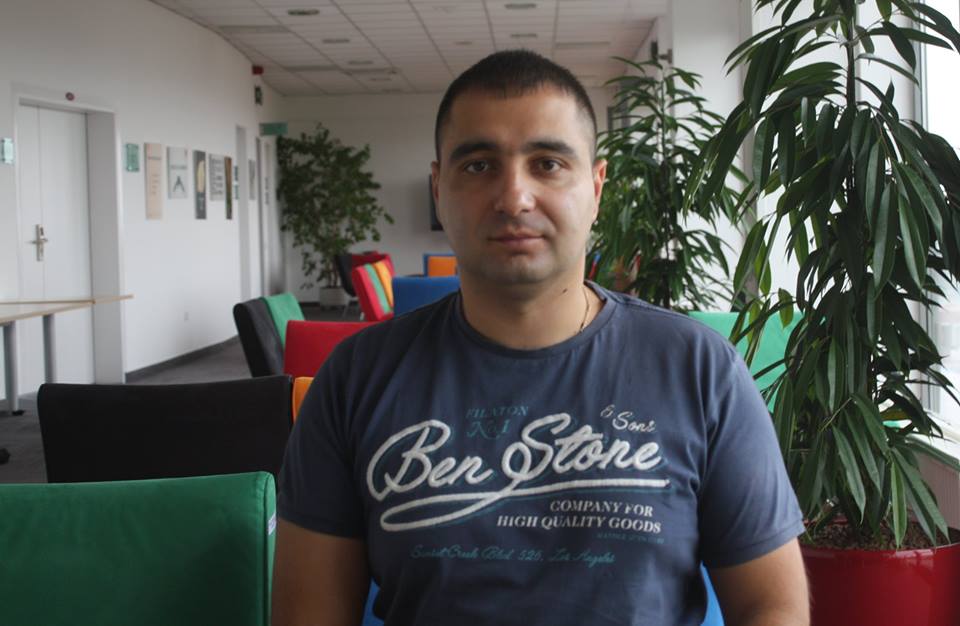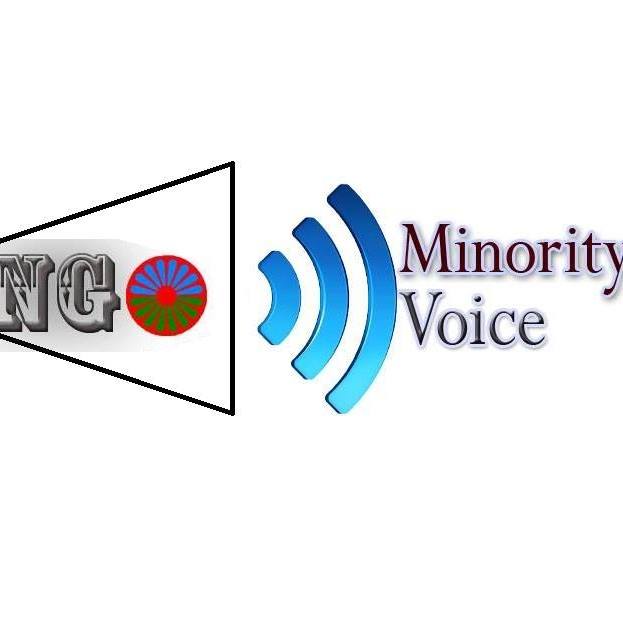Interview with Dragan Radosavljevic, President of Minority Voice (Serbia)
Orsolya Szabó: Can you please present Minority Voice? What are the aims, your main activities and how does the structure look like?
Dragan Radosavljevic: We are a Roma Youth NGO, which was established in 2011. Our main goal is to develop Roma youth policy through non-formal education. In our main activities we focus on the empowerment of young Roma through non-formal education. 70% of our activities are for Roma and for the Roma community but at least 30 % are for non-Roma people and we are very open for all the non-Roma participants and activist in our NGO. About our mission and vision, we rather like to say that we are trying to do just a good thing in the society with our work. Basically that means that we are trying to solve the problems at the local level in Serbia. We are trying to solve the problem of young Roma in Belgrade through health care, education, housing and employment. Our organization is small, it has 5 Board Members and some of the Members are at the same time regional coordinators for a national project in our country. When it comes to the staff members, at this moment we have three persons employed. Two persons are working full-time and one part-time. I am the President and the Director of the organization.
O.Sz.: Do you have volunteers?
D.R.: We don’t have EVS (European Voluntary Service) volunteers, this is something we are planning for 2016. But our organization was established on voluntary principles. We do our work on voluntary bases and we do a lot of voluntary activities, voluntary actions, and voluntary service for the community.
O.Sz.: You mentioned that you are doing projects for Roma youth empowerment through education. How do you reach your participants for your programs? How do you reach young Roma people for such activities?
D.R.: Roma youth participation is actually a big problem. It’s not that we cannot find the participants. The question is, how do we engage participants? When we have an interesting seminar for example the one we had in Cluj-Napoca with Phiren Amenca, we had no problem to have participants because it was an activity that young people actually want to do. And, they are motivated to travel, to see new cultures and make new friends. But when we have something like a social project, supporting the orphans, then it is hard to reach the participants. If I want 10 participants for a project that actually means that I have to have a discussion with each one of them why they should participate in the activity. At this moment we have a Roma youth club and we have a big problem with the participation because all the activities are short-term and are not so exotic, so there is low participation of Roma students. We have to call by phone every student that we know by name and explain why we would like him to come, what he or she will benefit and how the local community can benefit from both of us. It is not easy but we are trying to do it.
O.Sz.: What do you think why is local activism not so popular among young Roma people?
D.R.: I am not sure. Probably young people are trying to grow over the community. Maybe they see that as a right way to Roma integration. We do all the activities for the community and within the community. Because if the local Roma community does not have any benefits from the NGOs this means that the NGOs missed the aim and the purpose. Maybe the local Roma from the community are not so interested in the activities on the local level because they have been there for so long time and maybe they just want to leave.
O.Sz.: Can you name one of the programs that was especially successful because you managed to involve many young Roma people?
D.R.: The No Hate Speech Campaign is something that we are actually doing for long time, for 2 years. Young people find it very interesting because it’s not so hard to do, doesn’t require so much resources and free time and the activities are youth friendly. It’s nice, you meet different people with whom you have nice conversations, you have fun doing that and many of young Roma would like to join that campaign in Serbia. Basically the participants are presenting No Hate Speech Campaign, but offline. They are presenting what hate speech means, how it can be stopped, what we should do, to whom we should address this issue. Last year at the international voluntary day we had an activity “What is tolerance to you?”. We were asking young people to record a sentence what tolerance mean to them. We had a competition about which answer was the best and all that was followed by a big flash mob in the city center. So then they just came and socialized with each other, had fun and danced in the city center, it was like a day for fun. At the same time they promoted No Hate Speech Campaign and young Roma as leaders of activities.
O.Sz.: You mentioned the Barvalipe program before. How will you continue the Barvalipe school?
D.R.: Our NGO done a Barvalipe project in the first months of this year (2015). We can say that we have fulfilled what was expected from us but we noticed that we missed something in Barvalipe which is actually the local activities. We gathered 30 people, we educated them about Roma identity, Roma history, culture, leadership and that is nice but we missed local activities. We don’t like to have activities that don’t have impact in the local community. That’s why we applied for another project but this time to another donor. For example, in 10 places in Serbia we will have local activities such as workshops, round tables, campaigns and we will try in every of those places to establish a small Barvalipe school. It will start on the 15 of November in 2015.
O.Sz.: Do you do any programs regarding the Roma Holocaust in Serbia?
D.R.: We have really big problems regarding the Holocaust. We are trying to establish Roma Resistance Day, May 16 as a National day but at this moment we are not having any kind of support from the state of Serbia. So all we do is actually voluntary actions to mark the date as the Roma Resistance Day.
O.Sz.: And for the 2nd of August?
D.R.: Regarding the 2nd of August, it is a little bit better because it is known at the European level, it is the official date of the Roma Holocaust. So when it comes to that, the state is supporting us to have some kind of commemoration. For 2016 we want to develop a project for the 2nd of August in order to raise awareness on the actual numbers of Roma victims in Ex-Yugoslavia: Serbia, Croatia, Bosnia, and Montenegro. Because at this moment we don’t have exact numbers on how many Roma were killed, how many were deported and what actually happened with the personal belongings.
O.Sz.: Yes, there is a great lack of knowledge on the Roma Holocaust and Roma victims.
D.R.: That is a big problem because when it comes to health issues, the life of the Roma people are much shorter. So, to find a survivor today in Serbia who can present his testimony is a really big challenge. We will try but I am not sure how much we will do with the survivors. We will definitely find at least one, to have clear testimony. How many of them were evicted? From where? Where they were taken and why? How were they treated?
O.Sz.: You said that you wanted to start EVS. What do you want the EVS volunteers to do in your organization and who is your ideal EVS volunteer?
D.R.: Volunteers actually are the people who want to help, to discover new places and the ones that actually want to be involved in NGO work. So, for us, if we would have a volunteer, it would definitely be someone that want to join us in our activities, work in a local community to help Roma students and children. Moreover, I think that EVS is actually an excellent opportunity for young Roma to travel abroad, to discover something new, in that way they also would have an opportunity to see how other NGOs are working and also to meet other Roma and non-Roma cultures. For example young Roma from Serbia discover a whole new world in a local community of Roma in Finland. It is really powerful when you go far away and you enter the community and you find out that you can also belong to that community.
O.Sz.: Where does your NGO get funding from?
D.R.: I would like to explain something before I answer this. The government usually sees us as the people who just came to take something. But our NGO had international projects from the international donors and in those projects we have paid for taxes more the 5000 euro in Serbia. So what did we take from the country? We didn`t take anything from the country, we brought in money from outside. At this moment our partners are international donors as European Youth Foundation, Open Society and the National Democratic Institute. The Ministry of Youth and Sport in Serbia, which aims the integration of marginalized group of young people did not support even one project for young Roma this year. When it comes to other donors specifically for Roma, like the office for Roma integration, they have special calls for improving the position of Roma. We didn`t get any grant for last 4 calls. What is happening with these grants? Are these given to Roma participants at all? Do they support any kind of activity for local communities? Does any Roma community benefit from those grants? Those are the questions for which we do not have an answer, even if we are one of the most active Roma Youth ngo in Serbia, we are not supported by the “Roma office” and we do not know what the results are of their activities with and for Roma community.




